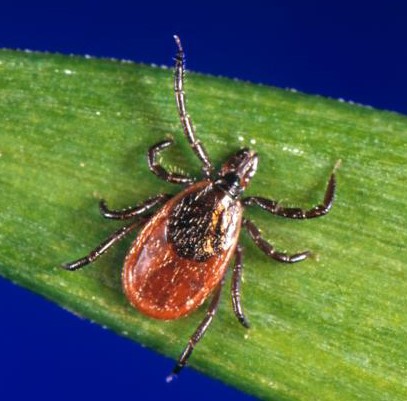Tick-borne Borrelia miyamotoi widespread in northeastern US

Yale University researchers have found widespread evidence of Borrelia miyamotoi—a relative to the bacterium that causes Lyme disease—in human blood samples in the northeastern United States.
“We’re talking about the possibility of tens of thousands of New England residents becoming infected with Borrelia miyamotoi based on what we found,” said Dr. Peter Krause, senior author of the study. “I think it’s important for people to realize that this disease is out there.”
B. miyamotoi is in the same genus as Borrelia burgdorferi, the agent of Lyme disease. But it is most closely related to the group of relapsing fever Borrelia spirochetes. It is transmitted by the same deer ticks that carry Lyme disease and can manifest with similar symptoms.
By testing more than 1,100 blood samples gathered from states across New England in 2018, the research team discovered that almost three percent of the study subjects showed evidence of an immune response (antibodies) to B. miyamotoi. Some collection sites demonstrated as much as 5 percent.
“We thought that Borrelia miyamotoi, because it was so recently discovered, would have been more locally confined,” Krause said “To our surprise, it was found at all our testing sites throughout New England.”
The proportion of samples containing antibodies to B. miyamotoi was low compared to that of Lyme disease pathogen, which reached more than 15 percent in some areas.
But Krause said the level of B. miyamotoi antibodies found in the samples indicates that physicians should keep an eye out for the bacteria in patients who present with Lyme disease-like symptom
10% of samples showed Babesia
For the study, the researchers also looked into the prevalence of another microorganism, Babesia microti, in their samples. That species is the primary cause of human babesiosis, and it can be spread through ticks just like the other two.
Their analysis suggested that around 10 percent of the samples showed evidence of antibodies against this pathogen. These infections can be transmitted at the same time and co=infection is possible.
“Lyme predominates, but the gap is not as great as is assumed,” Krause said. “There’s more Babesia infections than people realize. Physicians working in areas where babesiosis occurs should be aware of the disease and test for it when patients have consistent symptoms.”
Their findings were published in the journal Clinical Infectious Diseases.
SOURCE OF PRESS RELEASE: Yale School of Public Health




















We invite you to comment on our Facebook page.
Visit LymeDisease.org Facebook Page